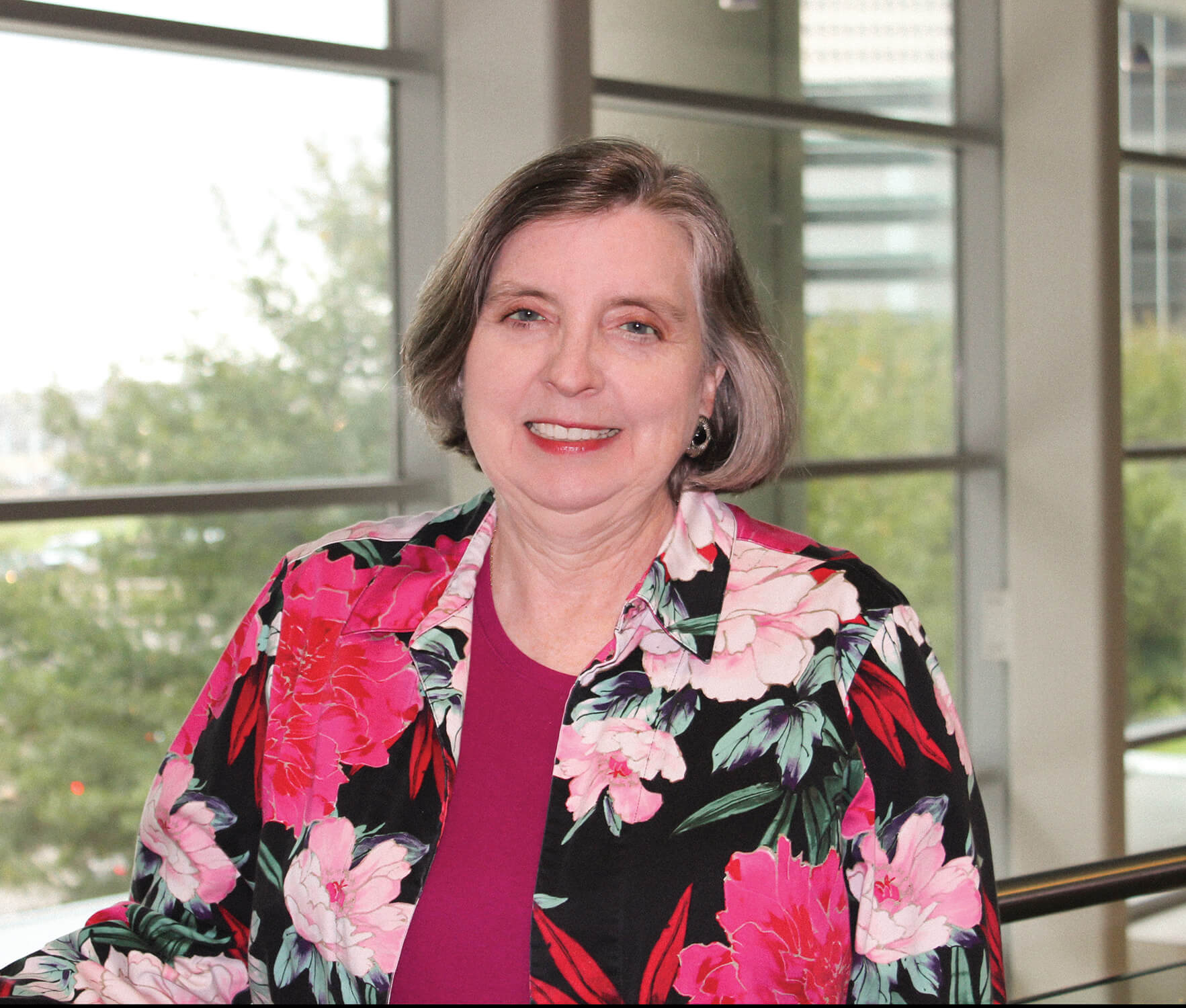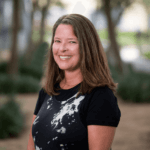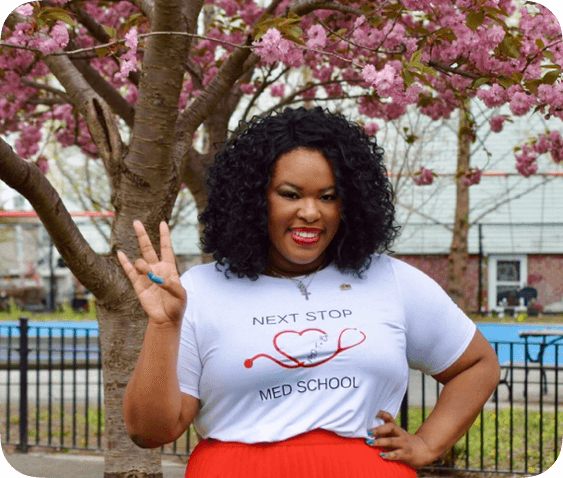What’s behind the nursing shortage? How can we fix it?

When Tonya Robinson was 9 years old, she fell off the jungle gym at her Albuquerque, New Mexico elementary school and suffered a concussion.
“My mom took me to the ER,” Robinson recalled. “While I was there, a little girl, about 2, was in a curtained area next to me. I could hear her screaming and crying.”
Robinson drifted in and out of sleep at the hospital, but at one point she woke up and asked about the little girl. The nurse explained that the child’s grandmother had been frying sopapillas in a pot of boiling oil on the stove and the girl had grabbed the pot and burned herself quite badly.
Robinson’s worry showed on her face.
“But the nurse told me the little girl was going to be okay,” Robinson said. “It was the way she spoke to me and held my hand. From that moment on, I wasn’t scared anymore. That was the day I realized I wanted to do that for somebody else—be their comfort when they are scared.”
Today, Robinson, 45, is a research nurse in urology at The University of Texas MD Anderson Cancer Center. Her childhood experience speaks to an essential truth: that nurses are the human face—the caring touch—of health care.
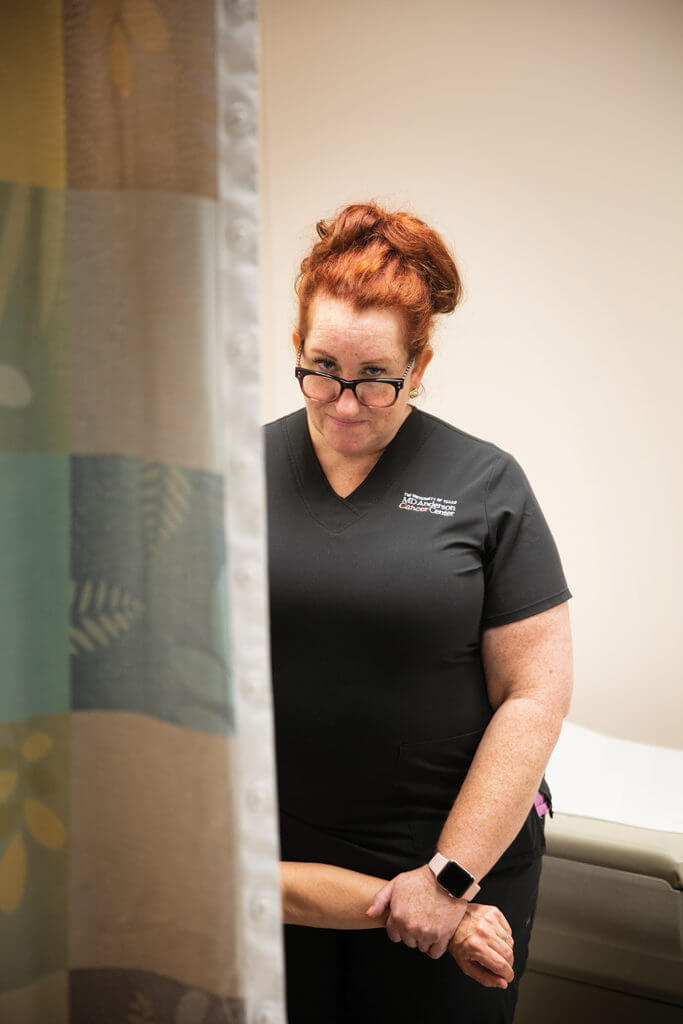
Tonya Robinson is a research nurse in urology at The University of Texas MD Anderson Cancer Center.
Most hospital patients, whether they realize it or not, judge the quality of their care on the expertise of the nursing staff.
“The nurse is the only professional with patients 24 hours a day in the hospital,” said Chuck Stokes, president and CEO of Memorial Hermann Health System and a registered nurse. “The doctor comes and goes. The physical therapist comes and goes. But the nurse is always there.”
Nursing is the nation’s largest health care profession, with nearly 4 million registered nurses (RNs) practicing across the country, according to the American Association of Colleges of Nursing.
Unfortunately, that is not nearly enough nurses to go around.
As nursing career options have expanded and the need for RNs has increased alongside aging baby boomers, the United States finds itself on the cusp of a serious nursing shortage.
In Texas, the supply of RNs, nurse practitioners, certified registered nurse anesthetists and certified nurse-midwives is projected to fall short of demand by 2030, according to the Texas Center for Nursing Workforce Studies. Some 60,000 RN jobs will need to be filled.
But nursing pays. The median income for RNs was $71,730 in 2018, according to the Bureau of Labor Statistics. With the chance to earn a decent wage, along with opportunities for overtime and flexible hours, why is the United States staring down a nursing shortage? And how can institutions in the Texas Medical Center and beyond fill these posts and retain this vital segment of the health care workforce?
Age and education
“The aging of the current nursing workforce is one reason for the nursing shortage,” said Cathy Rozmus, Ph.D., vice dean for academic affairs at Cizik School of Nursing at The University of Texas Health Science Center Houston (UTHealth). “In the state of Texas, 25 percent of all nurses are age 56 or older. You’ve got a quarter of the workforce within 10 years of retirement. The statistics for Harris County are about the same.”
Beyond that, the U.S. population is aging overall. By 2030, one in every 5 residents will be retirement age, according to the U.S. Census Bureau.
“With the aging population, we are getting ready to consume more health care resources than we have ever consumed in our country,” Stokes said. “There’s no reversing that trend.”
Education also plays a crucial role in the nursing shortage.
“As a nurse, you used to advance whether or not you went back to school. Now you see more nurses going back to school to advance,” said Cindy Zolnierek, Ph.D., the CEO of the Texas Nurses Association. “With today’s violence, the opioid epidemic and different expectations from the workforce, more education is needed so you can prepare for that complex health care environment.”
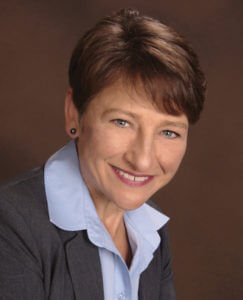
Cindy Zolnierek, Ph.D., is CEO of the Texas Nurses Association.
Increasingly, the gold standard for nursing care in hospitals is Magnet designation, which is conferred by the American Nurses Credentialing Center. A Magnet hospital sustains excellent patient outcomes, a low turnover rate of nurses and open communication between nurses and the rest of the health care team. Mortality rates are 14 percent lower at Magnet hospitals, according to a 2013 analysis from the University of Pennsylvania School of Nursing.
Hospitals wishing to acquire or maintain Magnet status must be able to show that 80 percent of RNs on staff have earned a bachelor of science degree in nursing or provide evidence that the nursing staff will achieve that goal by 2020.
But that’s harder than it sounds.
Educational opportunities and nursing programs are resource-intensive and scarce. A shortage of nursing schools and faculty means a limited number
of places and spaces to deliver the classroom and clinical education a nursing degree requires.
“To be a licensed RN, you can go to an associate’s degree program or a bachelor’s program—but those are the programs that have more applicants than they can accept,” Zolnierek said.
Stokes concurred.
“Nursing schools just can’t afford the faculty they need to accept all the people who want to go into nursing,” he said. “Also, you make more money as a nurse than as an educator.”
New opportunities, new deficits
Fifty years ago, ambitious nurses in hospital settings climbed a career ladder with a clear, vertical trajectory—moving from staff nurse to charge nurse to nurse manager/ head nurse to director of nursing. Over the past half century, that ladder has been tipped on its side and new opportunities have proliferated across a broader landscape.
“In the 1960s, if you were a nurse you likely worked in a hospital,” Rozmus said. “Now you can work in a clinic, in advanced practice delivering primary care services. You can get a Master’s or a Ph.D. and teach. The kinds of things nurses do have expanded like a sponge.”
This absorption of additional duties and extension of options within the profession has been going on for decades, Stokes said.
“With a nursing background, you can go to work for a biomedical company, a pharmaceutical company, Blue Cross and Blue Shield. You can become a hospital administrator. There are so many options for nurses other than taking care of patients at the bedside,” Stokes said.
But the bedside is still where nurses start. When nurses talk about “the trenches” they’re talking about bedside care.
“I truly believe bedside nurses who are working with patients who are admitted to the hospital have the hardest job,” Robinson said. “You are pulled in so many different directions—lots of coordination of care. You have five patients and you probably have five different physicians to deal with. … The family members have questions. The doctors want the reports from the night before.”
Keeping nurses at the bedside has become a challenge. Increasingly, the front lines of nursing have become a checkpoint on the way to someplace else.
“The new generation likes to have a lot of change and varied opportunities,” said Becky Sam, a nurse manager of pediatric and congenital heart surgery at McGovern Medical School at UTHealth who works at Children’s Memorial Hermann Hospital. “I see a lot of people leaving the bedside, some of them having families, a lot of them going to school to become nurse practitioners.”
The potential for higher salaries is a major reason for the shift away from bedside care.
“Bedside people are really talented,” Stokes said. “But nurses are figuring out, If I can put my life on hold for two years and go back to school to become a nurse practitioner, I can go from a salary of $75,000 to $150,000. Nurses going on to become neonatal nurse practitioners or geriatric nurse practitioners are creating a deficit at the bedside of a talent pool that is already limited.”
Bedside work also can be grueling. Handling patients can cause musculoskeletal injuries, Zolnierek said, including Carpal Tunnel Syndrome, tendonitis and bursitis.
“Those things affect a nurse’s quality of life and well-being,” she said.
A trusted, stable profession
For 17 years in succession, nurses have topped the annual Gallup poll that ranks ethics and honesty in the workplace, making nursing the most trusted profession.
Many nurses—along with teachers and preachers—use the words “vocation” and “mission” when describing their relationship to the job.
“I tell my kids, if you can love what you do, you’ll never work a day in your life,” said Robinson, whose blinged-out lanyard and whimsically-decorated headbands help communicate her enthusiasm to patients. “Nursing isn’t work to me. It’s a gift, every single day.”
For one part of the student population, nursing is a lifelong goal, said Ainslie Nibert, Ph.D., associate dean of the Texas Woman’s University nursing program in Houston.
The other part of the student population is drawn to the security of the profession.
“When you’ve had economic upheavals—the financial crash of 2008, the energy industry cycle through its ups and downs—we’ll see folks who recognize that people need health care in both boom and bust years. It is a stable industry,” Nibert said.
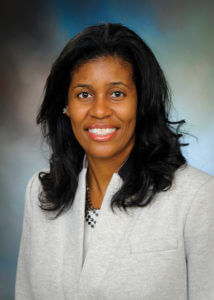
Deborah Jones, Ph.D., is dean of The University of Texas Medical Branch (UTMB) School of Nursing.
Some individuals entering nursing today have more than a decade of work experience else- where. That mingling of generations and expertise makes for a rich classroom experience, said Deborah Jones, Ph.D., dean of The University of Texas Medical Branch (UTMB) School of Nursing.
“The number of students who have come back to school to study nursing—from engineering degrees, business students, school teachers— they come back to study nursing because they’ve always thought about it,” Jones said “They’re in class with 19- and 20-year-olds, so there’s a mixture that makes for such a great cohort. The older students consciously lived in the world and chose to come back to nursing. The younger students, who might be coming out of high school, are learning from us and these older peers.”
Becky Sam was 36 when she became a nurse in 2007. For the decade prior, she was director of recreation for the First Presbyterian Church of Houston.
In the 12 years since she started nursing, Sam has pursued more education and set her sights on leadership.
“I’m a second-career nurse. I went back to school in my thirties and got an associate’s degree in nursing at Houston Community College,” Sam said. “In 2017, I got my bachelor’s in nursing from UT Arlington online. This past January, I started a master’s program in administration and leadership.”
Passionate and focused, Sam was among the hordes of nurses nationwide who bristled against comments made by Washington state senator Maureen Walsh this spring. Walsh denounced a bill that would grant nurses uninterrupted rest and meal breaks, saying she suspected that nurses in some rural areas “probably play cards” during their shifts because they have so much down time.
Nurses shot back on social media, laying out the breadth and scope of their work. Many, many nurses sent Walsh decks of cards.
Managing the looming shortage
Institutions are digging deep to educate incoming nurses and retain the nurses they have.
In 2012, The University of St. Thomas opened the Carol and Odis Peavy School of Nursing with 28 undergraduate students. Six years later, the school added the doctorate of nursing practice— graduates of this program will become nursing professors.
To keep a steady influx of prospective nurses, UTHealth’s Cizik School of Nursing admits students to their baccalaureate program three times a year.
“No summers off,” Rozmus said. “There’s always going to be that need for that nurse by the bedside. Patients are hospitalized for nursing care. In our baccalaureate education, that’s what we’re preparing people to do.”
Most hospitals offer residency programs that help new nurses get up to speed by pairing them with preceptors—experienced nurses.
At Memorial Hermann Health System, a nurse residency program offers between six and 12 months of training for new nurses, pairing new graduates with experienced nurses before giving newbies their own patients. In addition, Memorial Hermann offers a nurse executive leadership academy that helps nurse managers and executives develop leadership skills.
Because it is so difficult to find settings where nursing programs can give students hands-on time with patients, simulation training is catching on.
Texas Woman’s University College of Nursing created an immersive, 72-hour training, modeled after a program designed by NASA educators, in which nursing students are called on to juggle complex medical scenarios. Students also play the part of patients.
In June, UTMB opened a simulation center on campus—a 92,000-square-foot building with high-tech mannequins and room for students and actors.
What more could we do?
All institutions should strive to accommodate the nurse who is 55 or 60 and wants to work, say, a 6-hour shift rather than a 12, Stokes asserted.
“Let somebody job share with that nurse,” he said. “You don’t want that nurse to retire. That’s the nurse who’s training all the younger nurses. That’s the brain trust. You want to be flexible in your scheduling.”
Zolnierek said she worked in a medical surgery unit with a clinical mentor program that paired new graduates with experienced nurses, including a nurse who celebrated her 80th birthday in the unit. The clinical mentors did not take any patients; they simply provided clinical oversight to the new nurses.
“I thought that was an innovative approach,” Zolnierek said. “We were trying to accelerate the skill development you only get through experience, and we offloaded the physical demands of the work. … Younger nurses weren’t getting burned out because they had a level of support.”
Stokes also sees a local opportunity to nudge high school students from the Houston Independent School District (HISD) toward health care careers.
“We need to work with HISD,” he said. “During junior and senior years, if you want to be a nurse, you go to school in the morning and nursing school in the afternoon. When you graduate from high school, you can sit for your LPN [licensed practical nurse] boards and make $18 to $20 an hour as a living wage. … For some families this is about breaking the cycle of poverty. And if community colleges partnered with high schools to get kids interested in health care, it would go a long way toward solving the allied health workers shortage.”
Nursing students also should be encouraged to consider jobs outside of major metropolitan areas.
“A lot of underserved areas have to incentivize folks,” Nibert said. “We’ve got real problems with health care personnel concentrated in major cities and not so much in rural areas. If you are willing to go where the areas of highest demand are for nursing, it’s not necessarily here in the Houston metro area where they’re going to see the highest pay gains.”
One way to increase the number of sites where students can hone their clinical practice skills and get time with patients is to tap into non-traditional health care settings, Zolnierek said. Assisted living facilities, homeless shelters, primary health care clinics and other places that need nurses might offer valuable opportunities.
Most experts agree that the profession would be able to keep more nurses at the bedside by devising more creative retention strategies.
“We have to figure out ways to keep nurses at the bedside while they go back to school,” Jones said. “We have to increase partnerships between nursing schools and hospitals and outpatient settings so we are working together. Maybe a school of nursing provides all those nurses with a master’s degree with hospital-procured funding and the nurses stay in that hospital setting. That could be a win for everybody involved.”
There is no simple solution to the nursing shortage, but as the need for nurses grows more acute, patients and the health care community will feel the pain.
“People see what nurses do. What they can’t see is what’s going on between a nurse’s ears—what she is looking at, evaluating and thinking,” Zolnierek said. “That’s the real value of the nurse. The nurse can interpret what she is seeing and know what needs to be done to protect a patient and allow a body to heal.”



